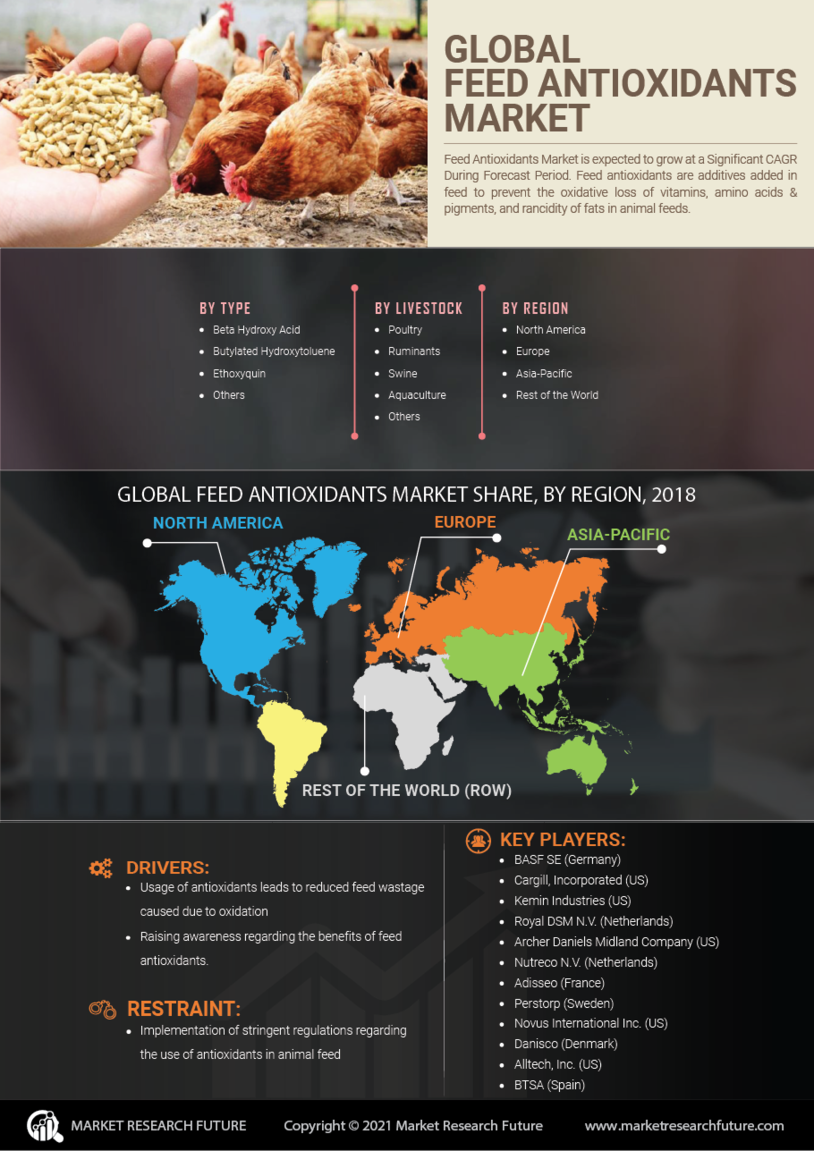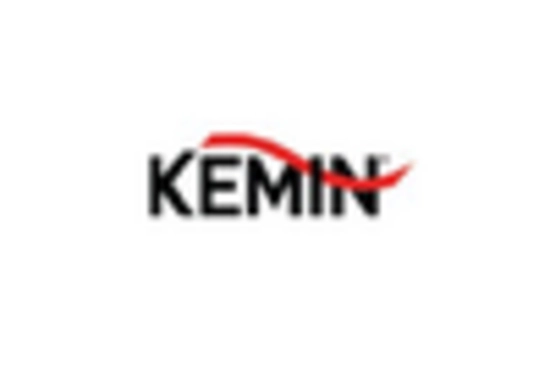The Feed Antioxidants Market is currently characterized by a dynamic competitive landscape, driven by increasing demand for high-quality animal feed and a growing awareness of the health benefits associated with antioxidants. Key players such as BASF SE (Germany), Cargill, Incorporated (US), and Kemin Industries, Inc. (US) are strategically positioned to leverage innovation and sustainability in their operations. BASF SE (Germany) focuses on developing advanced antioxidant solutions that enhance feed quality, while Cargill, Incorporated (US) emphasizes regional expansion and partnerships to strengthen its market presence. Kemin Industries, Inc. (US) is also notable for its commitment to research and development, which underpins its competitive edge in the market. Collectively, these strategies contribute to a robust competitive environment, where innovation and sustainability are paramount.
In terms of business tactics, companies are increasingly localizing manufacturing to reduce costs and optimize supply chains. This approach not only enhances operational efficiency but also allows for quicker responses to regional market demands. The Feed Antioxidants Market appears to be moderately fragmented, with several key players exerting considerable influence. The collective actions of these companies shape a competitive structure that encourages innovation and responsiveness to consumer needs.
In August 2025, Kemin Industries, Inc. (US) announced the launch of a new line of natural antioxidants aimed at improving the shelf life of animal feed. This strategic move is significant as it aligns with the growing trend towards natural ingredients in feed formulations, catering to consumer preferences for healthier animal products. By enhancing the nutritional profile of its offerings, Kemin positions itself as a leader in the market, potentially increasing its market share.
In September 2025, Cargill, Incorporated (US) expanded its partnership with a leading agricultural technology firm to integrate AI-driven analytics into its feed production processes. This initiative is crucial as it not only streamlines operations but also enhances product quality through data-driven decision-making. The integration of AI technologies reflects a broader trend in the industry towards digital transformation, which is likely to redefine operational efficiencies.
In July 2025, BASF SE (Germany) entered into a strategic alliance with a prominent feed manufacturer to co-develop innovative antioxidant solutions tailored for specific livestock needs. This collaboration underscores the importance of partnerships in fostering innovation and addressing the diverse requirements of the market. By pooling resources and expertise, BASF and its partner can accelerate the development of cutting-edge products that meet evolving consumer demands.
As of October 2025, the Feed Antioxidants Market is witnessing trends that emphasize digitalization, sustainability, and the integration of advanced technologies. Strategic alliances are increasingly shaping the competitive landscape, enabling companies to enhance their product offerings and operational capabilities. Looking ahead, it is anticipated that competitive differentiation will evolve, with a shift from price-based competition to a focus on innovation, technology, and supply chain reliability. This transition is likely to redefine how companies position themselves in the market, fostering a more sustainable and resilient industry.


















Leave a Comment